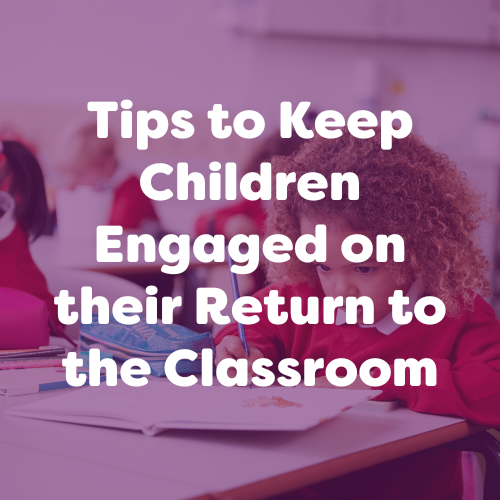This blog has been written by Matthew Crouch aka Mr C Classroom. An EYFS lead, class teacher and EYR Industry Expert. In this blog he uses his experience and knowledge – particularly as a PSHE subject leader – to share insights on attention span and keeping children engaged. To learn more about Matthew, his experiences and advice then head to his Instagram page!
As everyone knows, the pandemic has had an effect on almost every aspect of life. The impact on children is arguably one area that has been overlooked. More specifically, the way in which they engage with education since returning to a more structured classroom environment.
During remote learning, children became accustomed to logging on to a laptop or tablet. They spent a significant amount of time on technology to complete their school work. Fast forward to the return to face-to-face education and a lot of children had started to lose some of the fundamental components for being able to engage with their education. In other words, there was a distinct lack of concentration.
How do I keep a child or children engaged in the task at hand?. This is one of the key tasks for any educator, childminder, parent or guardian. From my own experience, the following points have been great ways to help improve engagement in my early years setting.
Play-based learning
Children love to play, no matter what age they are. They often don’t see the incidental/purposeful/planned learning that is taking place. Play allows children the opportunity to explore provision that is in place and suggest improvements, enhancements and new resources. This way, they will have ownership over their classroom and will engage with the areas as a result.
Provide challenges and scaffolding
Activities that are too easy or too hard will be an instant switch-off for any child. Scaffolding them through more difficult activities will give them a sense of accomplishment and promote a love of learning.
Link to children’s experiences
Connect learning with real life. Children will engage more when playing games or creating role-play scenarios if they have experiences to link the play to. For example, if a child has been baking or has been to the beach, they will have the relevant vocabulary. They will also know what happens and how to communicate this. Alternatively, an unfamiliar scenario can lead to a loss in confidence and a decrease in engagement levels.
Use interests as a source of inspiration
If children have a keen interest in the topic or activity you are suggesting, engagement will be higher. For example, a child who likes diggers will engage in counting if they use a digger to collect and count objects. The same activity with a different theme may not produce the same outcome. Communicating with carers is an excellent way to get updates on a child’s interests. This will often give insights into the child that aren’t seen in school.
At the beginning of the last academic year, children had the opportunity to choose the role play area. I left a large sheet of paper out to collect suggestions. The most suggested was an ice cream parlour and so that’s what I created. This meant the children had ownership and were invested in the area – the engagement then followed.
Finally, as much as is physically possible, make learning fun, active and something that children want to be involved with. This way, you will have no concerns over getting children engaged.




